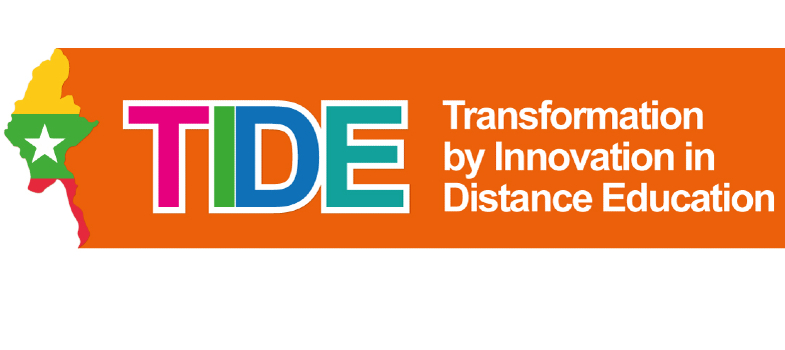Find out more about The use of field sites in the teaching of water pollution...
Context
This active learning example outlines the changes of teaching style to assess the learning outcomes associated with a course for undergraduate level, third year and first year honours students, the Environmental Chemistry module, which is part of a Chemistry degree. The new teaching learning approach is based on David Kolb’s Experiential Learning Model (ELM). It encourages the students to be actively involved in the experience and develop decision making skills and problem solving skills.
Activity Aims:
- To convert learning style of the students to converging learning style so that students learn how to solve problems and find solutions to practical issues( cf. Kolb,D. A.1984)
- To shift the students’ learning environment from the classroom to the public area
- For the students to get more knowledge and understanding about the module topics
- To provide enhanced learning opportunities including the experience of field work, and to develop students’ group work and research skills
- To include data and findings of students into the curriculum
Rationale:
Formerly, I taught this module in classroom by explaining about water pollution, causes, effects, problems and ways to solve these problems. However, the students could not clearly see the causes and effects of water pollution and relationship between business and environmental problems. Near our university, there are many dyeing houses on Taung-Tha-Man lake and along its banks. I recognized this condition could be used as a learning environment for my students with the potential to create an active learning style for sustainable development.
The activity:
About five groups of students (ten students and a tutor per group) were involved in this activity. First, we explained how to conduct the assessment of water pollution. A brief was written by the teacher to introduce the project as joint project between students, the teacher and local people. Students were asked to produce a plan for the project (materials they need to bring, what time they set out, how they go to respective field site, how they can get information about dyeing, etc.) under the leadership of their tutor. The students were also instructed to carry out a survey about dyeing processes, health condition of dyeing workers, about water resources of local people, and their style of water use. At the end of the module the students had to describe their findings to the local authorities in a face to face presentation. The outcomes of the students’ projects offered solutions for the dyeing waste disposal problem.
For the module assessment each group had to present their work to the rest of the class when they arrived back the classroom. Each presentation lasted nearly ten minutes with a class discussion about their findings lasting for about five minutes. These presentations were not part of the summative module assessment. After presentation, each group had to submit a typed copy of their report to the module team. The submitted reports were of good quality: all were assessed as either fair, good or exceptionally good.
Feedback on the activity from students and other stakeholders:
Students were asked to complete a feedback questionnaire. The students’ responses were that they had thoroughly enjoyed the field work. The best things about the module were field work, use of a non-marked presentation and the interactive discussions. The main thing they disliked was breathing bad smell released from dyeing process.
The local people told us that they thanked the students for helping them to understand the quality of water they use. They said that they are willing to help the students in future projects. They also asked the students to design the cost-effective system for the removal of dye from the effluent. Overall, the project benefited these communities as at least some villagers now know that dyeing effluent can pollute their water resources and can cause many health problems. So they can start to develop solutions to the dyeing waste disposal problem and avoid undesired problems in future.
Strengths and weakness of the activity:
The students become active participants in their own learning. They have gained greater understanding about water pollution though their experience in field sites. They have willingly participated in the conservation of their own environment. Throughout this experiential learning process, the students are actively engaged in posing questions, investigating, experimenting, being curious, solving problems, assuming responsibility, being creative. Relationships are developed and nurtured: students to themselves, students to local people, and students to authorities. In addition, the students could understand more about adverse effects of dyeing effluents on water resources and developed problem solving skills. They learned how to conduct group work successfully.
The relatively small participation of local business owners in this project is the main weak point. They can refuse to let their workers to participate in the students’ surveys, and this has happened. We have reflected that one way to resolve this problem would be to help the students develop better communication skills to engage with the employers. As teachers, we could teach the students how to persuade or suggest that the students bring some presents for those workers. Alternatively, we could decide that in future we will ourselves explain to the business owners and the workers about the student’s project and how it can be of use to the business.
Key words:
experiential learning; converging learning style; water pollution; dyeing effluent; field sites; problem solving skills; active learning.
References:
Kolb, D. A. (1984) Learning Styles and Experiential Learning Cycle: Experience as a source of learning and development. London: Prentice Hall.
Northern Illinois University (n.d.) Experiential Learning. [online] Available at: <https://www.niu.edu/facdev/_pdf/guide/strategies/experiential_learning.pdf> Accessed 9/2/2019.
Download this case study
